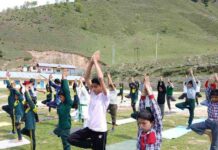APRIL 7: The government’s continued initiatives focusing on the education, skilling, and employment of women have significantly increased their participation in the workforce, both inside and outside the home. Over the past few decades, the rise of nuclear families has led to a growing need for quality day-care services for children, especially for working mothers. In joint families, children had support systems while their mothers worked, but with the increase in nuclear families, reliable child care facilities have become a necessity.
To address this gap, the government introduced the Palna Scheme, which provides day-care crèche facilities for children of working women. This initiative formalizes child care, which has traditionally been viewed as domestic work, and aligns with the “decent work campaign” under Sustainable Development Goal 8 — to promote decent work and economic growth. By relieving mothers of unpaid childcare duties, the scheme enables more women to participate in gainful employment.
In 2022, the National Creche Scheme was reorganized and renamed the Palna Scheme under the sub-scheme ‘Samarthya’ of Mission Shakti. The Palna Scheme is a centrally sponsored initiative with a funding ratio of 60:40 between the Central and State governments, or 90:10 for North Eastern and Special Category states. For Union Territories (UTs) without legislatures, 100% funding is provided by the central government.
The main objective of the Palna Scheme is to offer quality crèche services in a safe and secure environment for children aged 6 months to 6 years. This includes providing nutritional support, health care, and cognitive development services, as well as growth monitoring and immunization. These services are available to all mothers, regardless of their employment status.
An additional goal of the scheme is to ensure compliance with Section 11A of the Maternity Benefit Act, which mandates crèche facilities at establishments with 50 or more employees. States and UTs are encouraged to create portals for registering crèches in line with the Act.
Under the Palna Scheme, an integrated package of services is offered to children. These include day-care facilities, early stimulation activities for children under 3 years, pre-school education for those aged 3-6 years, supplementary nutrition, health check-ups, and immunization. This initiative works in conjunction with Mission Poshan 2.0 to improve early childhood care and development.
Additionally, Anganwadi-cum-Crèches (AWCCs) play a crucial role in this effort. These centers provide comprehensive care and support, ensuring safe, hygienic, and developmentally appropriate services for children. The Ministry of Women and Child Development aims to establish 17,000 new AWCCs in 2024-25. By March 2025, 11,395 AWCCs across 34 states and UTs have been approved, helping increase women’s workforce participation while ensuring quality child care.



















